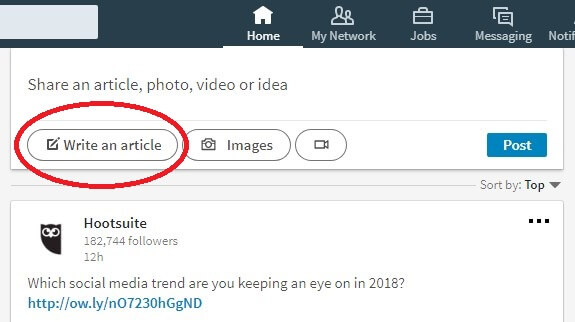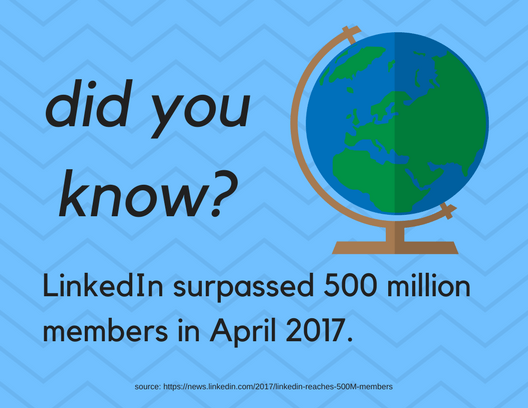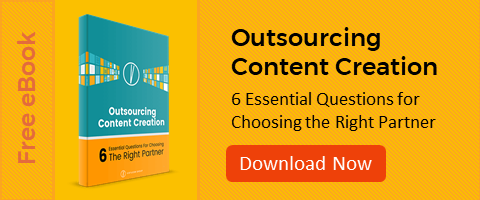Your sales team can’t cut it alone in the world of inbound marketing.
That’s no slight on your team; there’s no doubt they’re doing everything they can to bring in new business. But 38% of salespeople agree that it’s getting harder to bring in prospects. And that’s because old tactics simply don’t work like they used to. Marketing professionals agree, with 32% confirming that outbound marketing strategies are simply a waste of time.
What does this mean for your company? To stay competitive in a marketplace defined by inbound marketing, you’ll need the rich, high-quality content that engages prospects and turns them into leads and eventually customers. If you’re reading this post, then you’re probably already well aware that content marketing works. You publish thought-provoking blog posts. You turn research into case studies, whitepapers and ebooks. But are you taking advantage of every opportunity to showcase your content online?
If you’re not strategically sharing content on LinkedIn, the answer is no.

Why Buy Articles For LinkedIn?
You might be asking yourself, why would my business want to buy articles for LinkedIn – isn't it true that companies can't publish there? It’s true that long-form publishing on LinkedIn is currently restricted to individuals, but that doesn’t mean that your company can’t find value in creating long-form content on the platform.
In fact, LinkedIn encourages brands to take advantage of the power of long-form publishing by treating their team members as brand ambassadors. The LinkedIn Publishing Playbook provides a detailed plan for companies interested in utilizing this strategy that includes:
- Naming an internal marketing manager or external content agency to coordinate and strategize
- Identifying several brand representatives to publish content on their personal profiles
- Publishing one to three times per month
- Encouraging cross-promotion through fellow employees and company social media profiles
- Tracking performance to define future initiatives
If you’re already maintaining a regular blogging schedule and using other content to support inbound marketing, you might question whether or not a LinkedIn strategy that’s not directly connected to your brand’s profile is worth your time. After all, your goal is to promote ABC Widgets, not Jane Smith, Director of Engineering at ABC Widgets. That might make sense at first glance, but here’s why promoting Jane is a win for everyone on the ABC team.
Thought leadership delivers results. Never underestimate the value of presenting your team as industry experts with valuable insight and analysis to share. Recent research revealed that while 50% of B2B marketers believed thought leadership built trust in a brand, a staggering 83% of buyers agreed with that sentiment. When Jane shares a thoughtful article on LinkedIn that demystifies a new technology or comments on a rising industry trend, she communicates the company’s depth of knowledge and commitment to consumers to earn trust for the brand.
Your employees are natural brand ambassadors. According to a study by Weber Shandwick and KRC Research, 50% of employees have shared content about an employer, and another 39% have made positive comments about their company online. Now consider that information alongside this data: 49% of consumers trust information that comes directly from a company’s employees over the news from a brand’s PR department. Impassioned team members with something valuable to say are a huge asset to your business, as they can speak meaningfully on company and industry issues in an authentic voice that doesn’t seem like an advertisement or marketing ploy.
Cross-promotion means more eyes on your content. You share your company blog posts on LinkedIn, right? (If not, stop what you’re doing and cross-post your content right now – you’re missing out on additional clicks, comments and shares.) When your team members post articles on LinkedIn, you’re adding another way to draw readers to your other content as well. And we’re not talking about a handful of potential readers, either. As of April 2017, the network boasts 500 million users.

That means more than 6.5% of the world’s population has a LinkedIn account, so there are many opportunities to connect with potential clients. Every article published on LinkedIn is shareable (more on that later), and every article should contain a call-to-action that makes the content actionable, whether that’s encouraging readers to visit your blog, watch a video your company posted on YouTube or download an ebook related to the topic at hand.
LinkedIn articles are shareable by design. Web content isn’t meant to be kept secret, so LinkedIn made it as easy as can be to circulate your work throughout the platform. For one, there’s a very visible “share” button that lets users repost your article on their feed, so their connections also get access to your work. Furthermore, every time a user likes an article, the fact that they liked your article is displayed on the feed of all of their connections. This means that if a user with a network of several thousand connections hits that like button, you hit the jackpot.Building an Effective LinkedIn Content Development Strategy
LinkedIn is a fearsome tool if it’s employed correctly, but without taking measures to ensure maximum shareability, you might be missing out on a great deal of potential viewers – or you might not score any reads at all. So how can you (or your outsourced content writers) create a shareable LinkedIn article?
1. Write long-form content.
But not too long-form. There aren’t really any concrete numbers dictating the perfect length of a LinkedIn article, but suggestions often range from 300 to 1,000 and beyond. When Pulse was still around, some studies, including one by OkDork, recommended writing articles as long as 2,000 words. Now, you’ll want to stick with something shorter. Just don’t skimp on robust information.
2. Workshop that headline.
Think you’ve come up with a great title? Write another. And another. It’s important to put time into your headline, because that’s what people see first. This might be a hard truth to face, but if your title doesn’t transform every connection into an interested reader, your article might as well not exist. Common article headline tips include using “How to…” titles and list-style titles (6 Reasons You Need to…), but no matter which format you use, make sure your headline is as gripping as can be.
3. Add pictures.
Would you rather look at a massive, black-and-white slab of text or a carefully formatted article complemented by relevant imagery? The answer is almost certainly the latter. Follow this intuition and incorporate useful images by using infographics, graphs and more.
4. Don’t buy an article that reads like an advertisement.
Can you name-drop your company? Absolutely. But you definitely shouldn’t do it in the first few paragraphs, because that will make you sound like a salesman. Instead, focus on delivering compelling content that drives readers toward the end of the article, where you can insert a call-to-action (CTA) to direct those readers toward your business’s blog. This brings us to the final entry on the list…
5. Include a call-to-action.
For you, your CTA is the reason you’re writing a LinkedIn article in the first place, so make sure it’s incorporated carefully into the article. Users who aren’t writing on behalf of a company should include clear contact information, while those writing for a business should feature an easily accessible link to the company’s blog or an optimized landing page. Ending with a small boilerplate discussing the company’s mission could also help.
Content Development Shouldn’t Be a Burden
If you’re looking for additional ways to power your inbound strategies with content, LinkedIn articles could provide the perfect solution. That said, it’s not enough just to churn out articles. You’ll only see the benefits of LinkedIn publishing if every article hits the mark in terms of quality writing and information.
That’s why many companies outsource LinkedIn articles to content writing services companies. Ghostwritten articles take the burden of writing off your staff and ensure the higher level of quality that professional writers deliver. Not sure how to find the right content partner for your needs? Learn more with our free ebook, Outsourcing Content Creation: 6 Essential Questions for Choosing the Right Partner.






